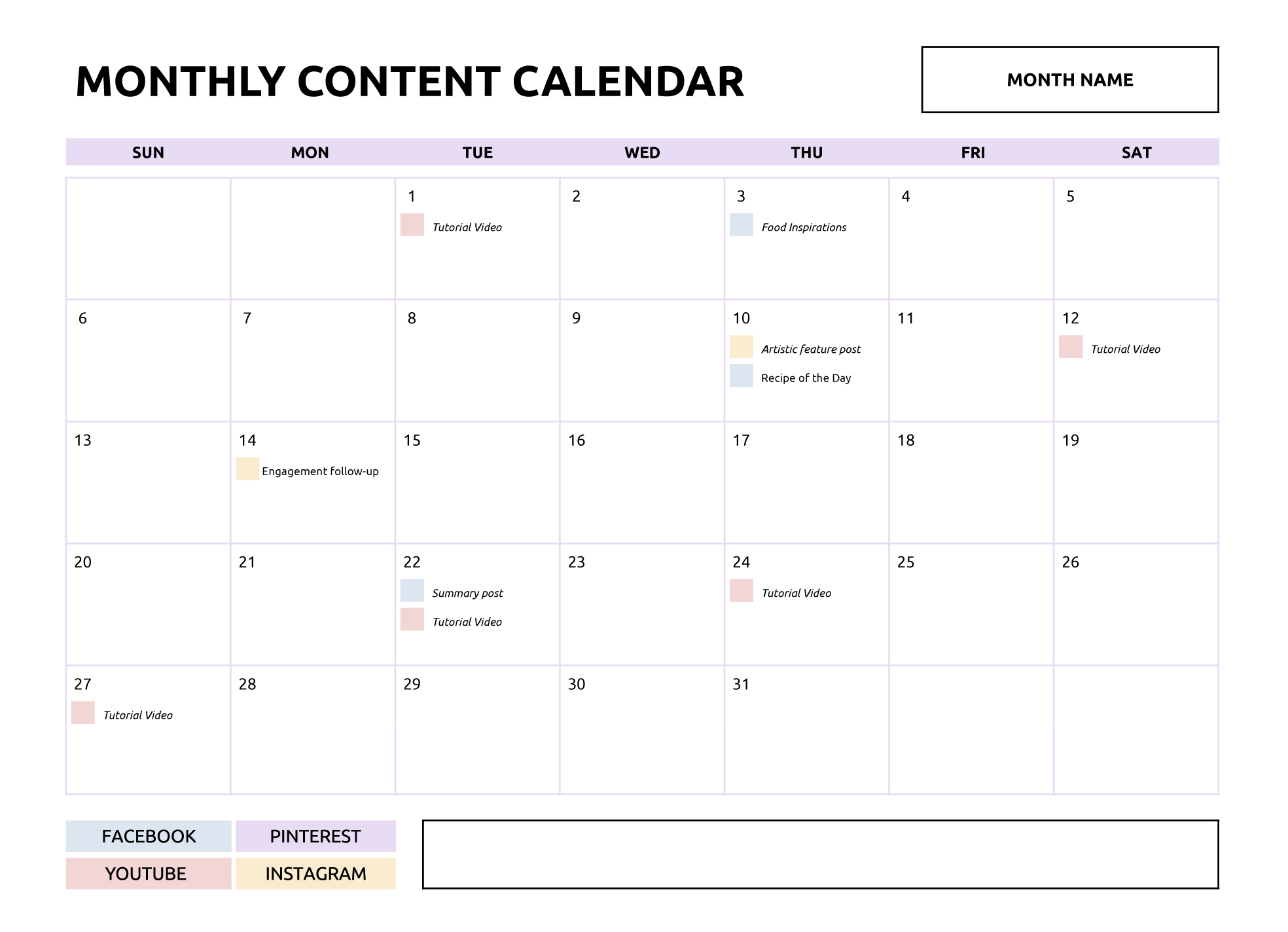1. Why Every Creator Needs a Content Calendar
If you’ve ever struggled to stay consistent with posting or missed deadlines, you’re not alone. A content calendar helps you organize your ideas, plan your uploads, and manage your publishing schedule like a pro. It turns random posting into a focused, data-driven process that gets results.
For creators, consistency is everything. Whether you run a YouTube channel, blog, or social media page, having a central place to track what’s next keeps your audience engaged and your workflow stress-free. That’s where a simple yet powerful content calendar becomes your secret weapon.
2. What Makes This Template Different
Unlike generic calendars, The Content by Design’s free content calendar is created specifically for creators who juggle multiple platforms. It’s designed to be visually clean but detailed enough to cover all your needs.
You’ll get columns for platforms, content type, keywords, publish dates, and even hashtags. There’s also a status tracker to see where each piece stands—from idea to published—at a glance.
3. Key Features You’ll Love
This template comes with an easy-to-navigate dashboard that lets you plan content monthly or weekly. You can organize ideas, mark them by platform (YouTube, Instagram, Blog, TikTok), and assign tasks or deadlines to team members.
There’s also a space for notes and performance insights. Whether you’re a solo creator or working with a team, the structure helps everyone stay aligned and productive.
4. Benefits of Using a Content Calendar
The biggest advantage of a content calendar is time management. You’ll spend less time deciding what to post and more time actually creating content that connects.
It also improves consistency. When your audience knows when to expect new content, they’re more likely to return, follow, and engage. That’s how steady growth happens—through organized planning and predictable posting.
5. Google Sheets Version: Collaborate in Real Time
The Google Sheets version of this calendar is perfect for creators who like to collaborate or access their planner on the go. Since it’s cloud-based, you can update it anytime, from any device.
You can also share it with your team or editor and assign tasks using built-in comments. It’s ideal for creators managing multiple social accounts or campaigns simultaneously.
6. Excel Version: Simple, Offline, and Customizable
Prefer working offline? The Excel version gives you complete control and flexibility. You can customize colors, add formulas, or even connect it to analytics sheets.
It’s perfect for creators who love structure but prefer privacy or limited sharing. Once downloaded, it’s fully yours to edit, modify, and personalize.
7. Monthly View for Strategic Planning
The monthly calendar tab lets you map out major campaigns, holidays, and product launches ahead of time. This helps you align your content with trending moments or seasonal spikes.
By planning in advance, you’ll never run out of ideas or miss an opportunity to connect with your audience when they’re most active.
8. Weekly Tracker for Consistency
The weekly section is where your routine meets action. You can assign tasks like shooting, editing, posting, and promoting—all on one page.
Each day has space for captions, post ideas, and hashtags, giving you a complete workflow overview. It’s ideal for creators managing daily uploads or short-form video schedules.
9. Status Tracker for Smooth Workflow
The built-in status column tracks every piece of content from Idea → Draft → Scheduled → Published. This small addition makes a huge difference in staying organized.
No more confusion about what’s been done and what’s pending. It ensures your entire content pipeline moves efficiently, even when you’re managing multiple topics at once.
10. Hashtag & Keyword Section
Optimizing for search is easier when you keep your hashtags and keywords in one place. This section helps you track which tags or topics are performing best.
Over time, it becomes a mini SEO database that helps you refine your strategy for each platform. This feature alone can help boost reach and engagement organically.
11. Tips to Make the Most of Your Template
Start by filling in one month at a time. Don’t try to plan an entire year right away. Focus on quality and consistency.
Also, color-code your platforms—blue for YouTube, green for blog posts, purple for Instagram. This visual organization makes your calendar easier to scan and fun to use.
12. Download Your Free Templates
Ready to organize your creative life? Download your free templates below and start planning smarter today.
Each template is 100% editable and created with both simplicity and functionality in mind. Whether you’re a content creator, marketer, or freelancer, this is your all-in-one tool for planning success.
Final Thoughts
Creating great content shouldn’t be chaotic. With a smart planning system like The Content by Design Content Calendar Template, you’ll post more consistently, stay organized, and grow your audience faster.Take the first step today—download your templates and bring structure to your creativity.

